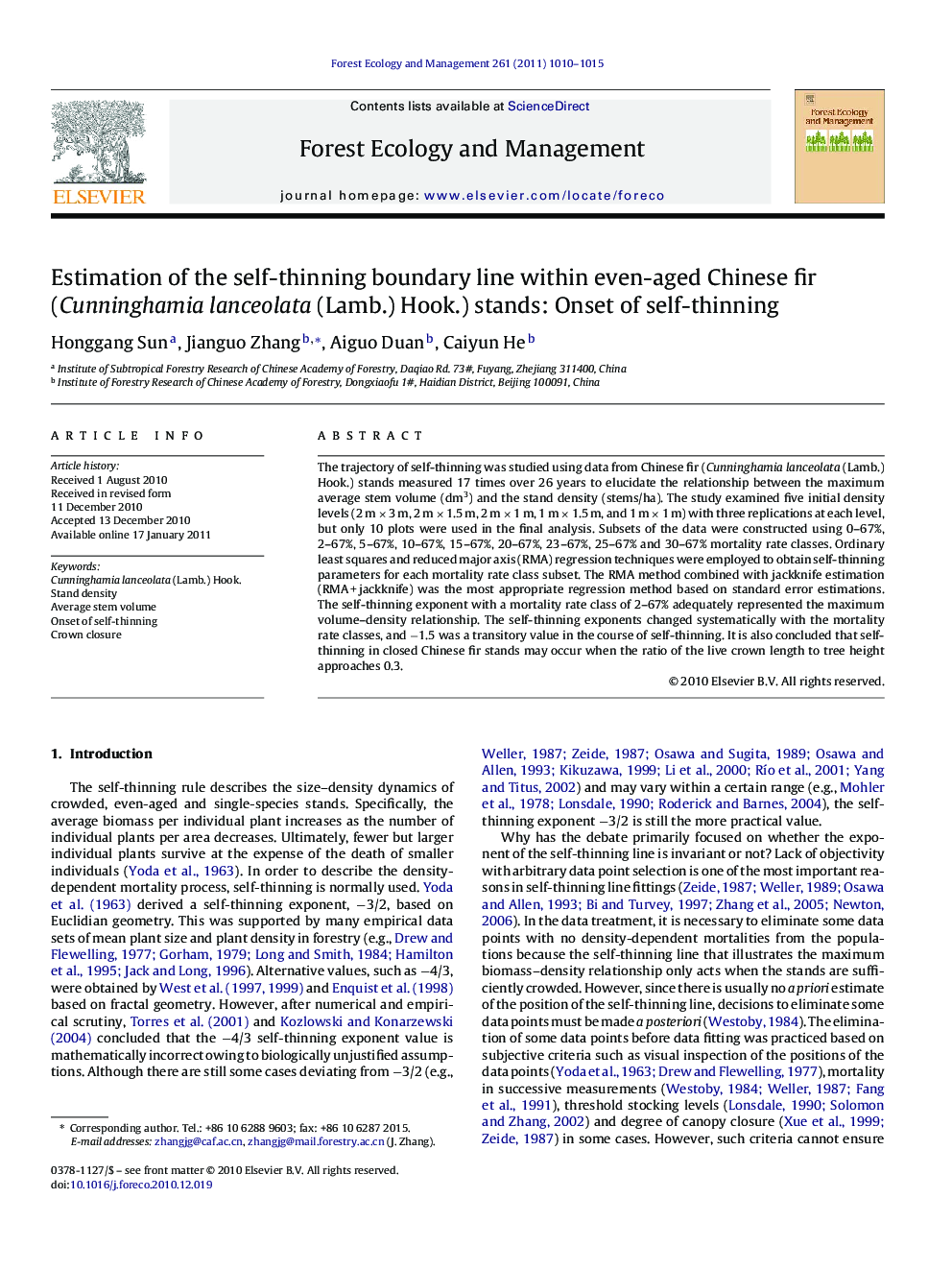| Article ID | Journal | Published Year | Pages | File Type |
|---|---|---|---|---|
| 88242 | Forest Ecology and Management | 2011 | 6 Pages |
The trajectory of self-thinning was studied using data from Chinese fir (Cunninghamia lanceolata (Lamb.) Hook.) stands measured 17 times over 26 years to elucidate the relationship between the maximum average stem volume (dm3) and the stand density (stems/ha). The study examined five initial density levels (2 m × 3 m, 2 m × 1.5 m, 2 m × 1 m, 1 m × 1.5 m, and 1 m × 1 m) with three replications at each level, but only 10 plots were used in the final analysis. Subsets of the data were constructed using 0–67%, 2–67%, 5–67%, 10–67%, 15–67%, 20–67%, 23–67%, 25–67% and 30–67% mortality rate classes. Ordinary least squares and reduced major axis (RMA) regression techniques were employed to obtain self-thinning parameters for each mortality rate class subset. The RMA method combined with jackknife estimation (RMA + jackknife) was the most appropriate regression method based on standard error estimations. The self-thinning exponent with a mortality rate class of 2–67% adequately represented the maximum volume–density relationship. The self-thinning exponents changed systematically with the mortality rate classes, and −1.5 was a transitory value in the course of self-thinning. It is also concluded that self-thinning in closed Chinese fir stands may occur when the ratio of the live crown length to tree height approaches 0.3.
Research highlights▶ The self-thinning exponent with a mortality interval of 2–67% sufficiently represented the maximum volume–density relationship for Chinese fir based on the onset of self-thinning. ▶ Self-thinning exponents systematically change with different mortality intervals, and −1.5 is a transitory value in the course of self-thinning that gradually changes due to dynamics of crown size distribution. ▶ The self-thinning may occur when the ratio of crown length and tree height (CL/TH) in closed stands approaches 0.3.
